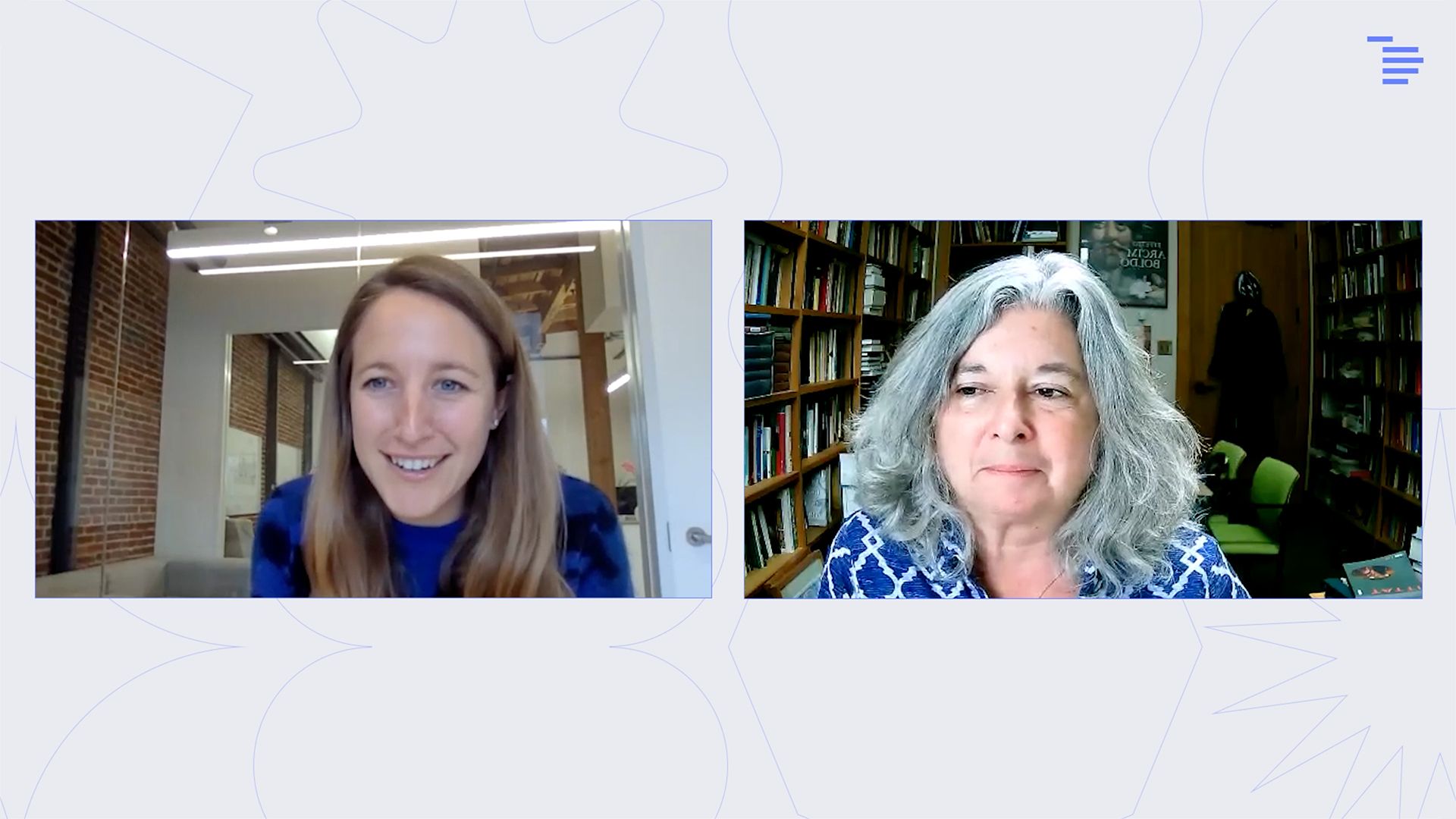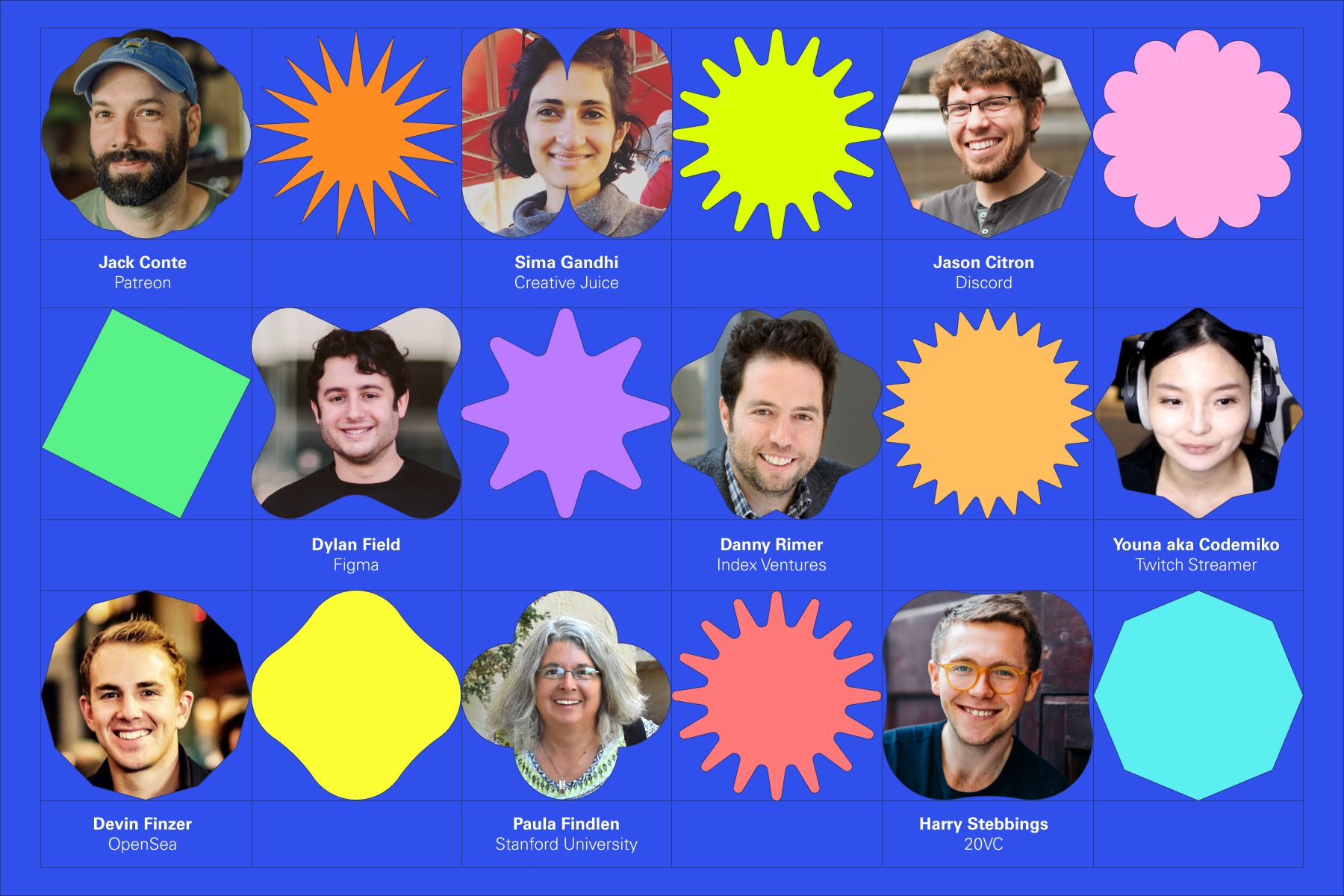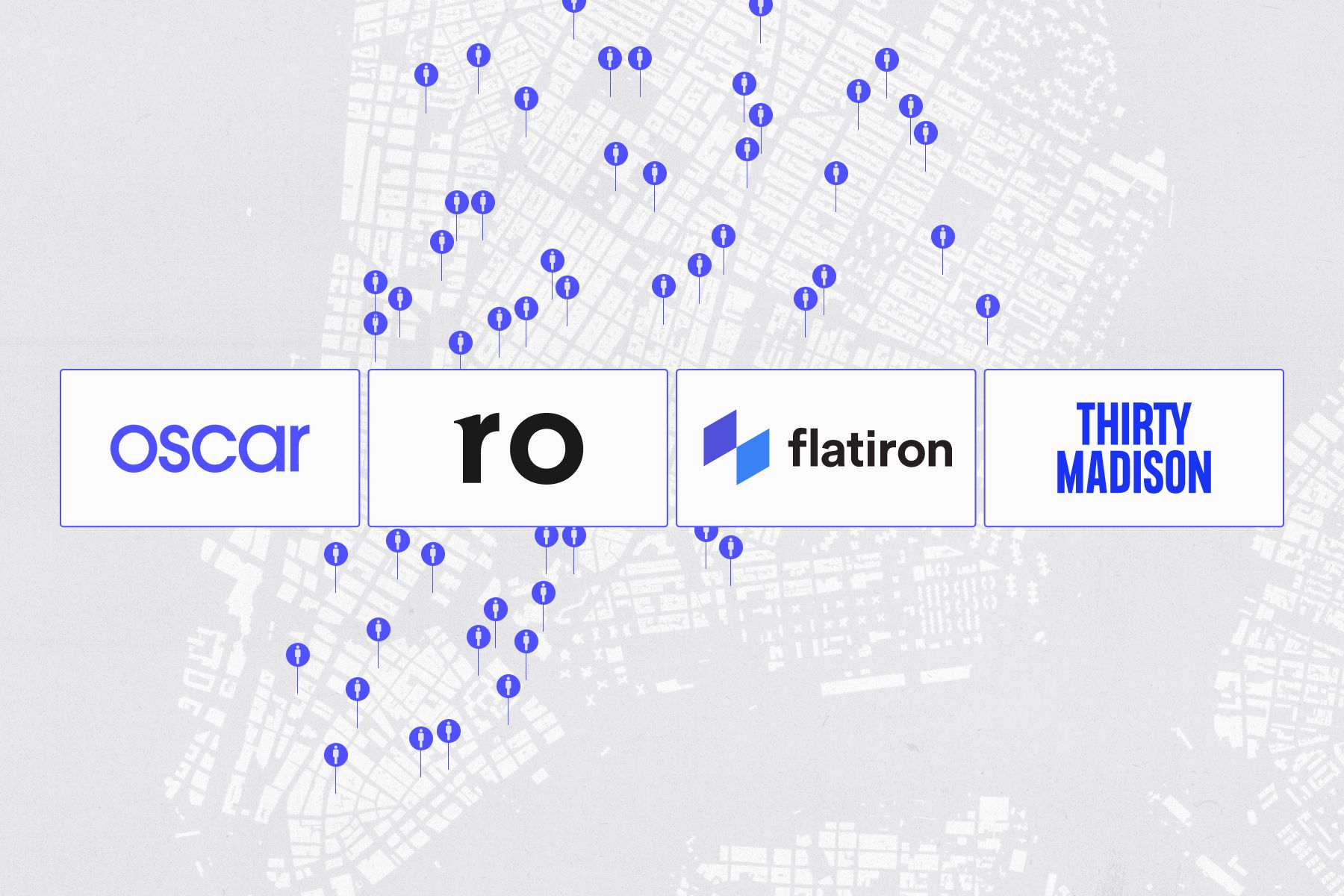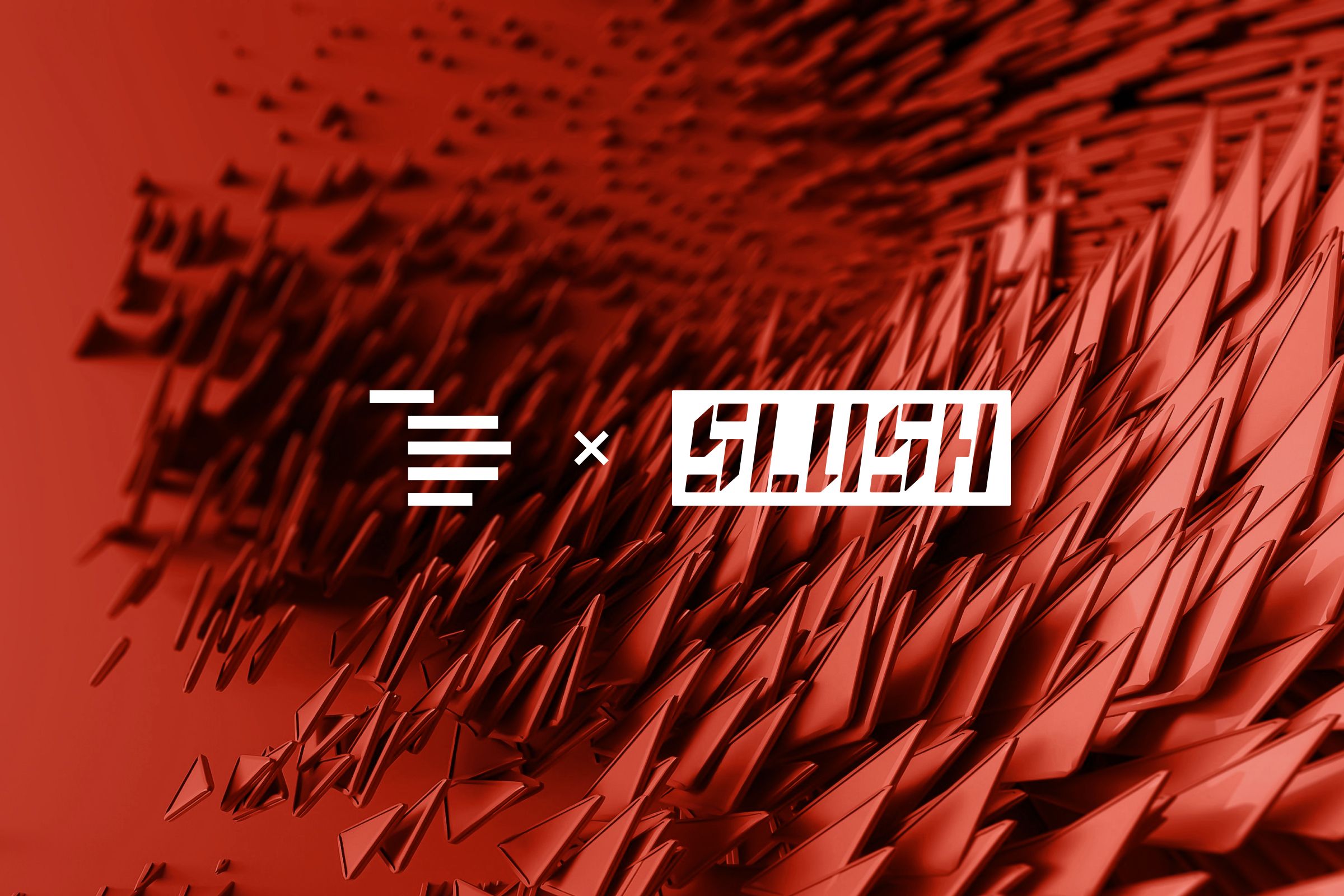Index Creator Summit: The Past & Present Renaissance

From the way we produce and consume culture, to how we live and work, a fresh generation of businesses is reimagining what it means to ‘create’ in today’s digital economy. We hosted the Index Creator Summit 2021 to unpack the creator phenomenon and how it cuts across social, gaming, media, crypto and commerce.
Here, Paula Findlen, the world's preeminent expert on the Renaissance speaks with Index partner Sarah Cannon on parallels between the Renaissance and our modern, technology-driven creator economy.
Find out how Raphael growth-hacked his graphic style and why Rome was the Renaissance LA in a discussion between Paula Findlen, the Ubaldo Pierotti Professor of Italian History at Stanford University and world renowned Renaissance expert, and Sarah Cannon, partner at Index Ventures.
The conversation opens with an invitation from Sarah to see what lessons can be drawn about the future of digital creativity by examining the Renaissance in greater depth. They consider Paula’s claim that the Renaissance was a ‘historical laboratory’ for grappling with the problems and possibilities for an innovative society, with new investment infrastructure, fresh technologies and techniques, and a fundamental change in attitudes towards artists – shifting their status from ‘makers’ to ‘knowers’. The pair move to the role of individual creators versus the multiplying effect of collectives, and consider whether centres of influence such as Florence and Rome could now be decentralised across the internet from Caracas to Latvia. Next they analyse the role of Renaissance patrons and the perennial problem of artistic funding, and conclude by touching on the power of technology and its limits.
Prefer audio? Listen to the Creator Summit on Spotify, Apple Podcast or right below.
TRANSCRIPT
Sarah Cannon:
Paula, thank you very much for joining us today for our inaugural Creator summit. It’s a real pleasure to have you with us. Some of my colleagues have talked about the digital Renaissance that has arrived with creators now having the tools, the distribution mechanisms and new relationships between patrons and creators, enabling this flourishing.
In order to understand the second Renaissance, we thought best to actually understand the first Renaissance. And no one better to be with us than the Ubaldo Pierotti Professor of History at Stanford. Paula, thank you very much for being with us today.
Paula Findlen:
It's a great pleasure, Sarah. I'm really happy to be here.
Sarah Cannon:
In college, I actually studied art history in addition to economics. And I have to say, I did not think that it would intersect with my life as an investor. So a real personal joy for me to have you.
You talk a lot about Renaissance Italy as being the historical laboratory for understanding the possibilities and problems of a potential kind of innovative society. Let's start with the possibility side of it. What did you mean by that?
Paula Findlen:
Well, I would point to several key factors. So one is new kinds of patronage. The Renaissance is an incredible place to understand the emergence of a variety of different kinds of infrastructures, of investment and support for all sorts of creativity. So this is one key thing I mean when I talk about this as a historical laboratory of an innovative society.
The other is the role of new technologies, but also techniques, new ways of making and of doing things as well, and the way that these things come together. And last, but hardly least, I would also want to point to what happens to attitudes towards artists and the arts.
One of the things we generally say about the Renaissance is it's a period in which the artist is no longer seen only as a maker, but a knower. So how does making become knowing, and what does that do for the society as well as for the arts themselves, and what does it do for artists? That’s one of the reasons I fell in love with the Renaissance years ago, and I've never gotten tired of thinking about this.
Sarah Cannon:
Well, I'm curious to understand more about what you mean about that makers versus knowers, because in the digital analogy, we think about companies like Roblox where they have really built kind of a metaverse for children of all ages to really be creators. So I'm curious to dig in more. We talk about creators and makers. What's the difference between that and a knower?
Paula Findlen:
The traditional workplace for an artist say in the Middle Ages, or even in the early years of what we call the Renaissance is what's called the bottega, the shop. So think about what a bottega is. A bottega it's not my craft shop where I do projects and woodworking. I mean, you may be doing those things, but fundamentally a bottega is a commercial works place. It's open to the public. It's a place where you sell things. So the word bottega is one that really is essential to understanding where the art start, that these are artisans selling their wares to the public in a public space that is also entirely commercial.
One of the things you begin to see is artists talk about the fact that they are now in something they call the studio. Our term studio comes from that. And people talk about having a studio, not a bottega. We've actually kept that word all the way to the present day. Isn't that amazing? And it's kind of a legacy of the idea.
So what is a studio? It's similar to the word study. A studio is a place where say teaching can occur. So rather than just hiring somebody on as an apprentice, you are teaching them a set of learned skills, not just manual techniques, but something that goes beyond it. The studio is a space of learning. And finally, it is also a space of research, the idea that you learn deeply, that new kinds of knowledge can come out of it. So the idea of being a knower is very tied to having a studio.
And famously, you can think of examples of this. Michelangelo said late in his life that he never had to aprire bottega, to open a workshop. And this was his way of saying that he had always been a painter of a studio, which when you look at the literal aspects of his life, it's a little disingenuous, but there's enough truth to that. I mean, this is why when he dies, people call him the divine and they sort of make him this transcendent figure, because he has really sold and lived this kind of new lifestyle of the artist in various ways.
Sarah Cannon:
As a lover of art myself, I always think of the studio visit as the greatest honour, to be able to actually interact with an artist. Western tradition seems to really celebrate the individual artist, like the Leonardo da Vinci and his individual genius. He seems like the original polymath in many ways. But in reality, at least in my observation, it seems like a lot of artists exist in cohorts, like Matisse and Picasso were actually creating at the same time, or Warhol and Basquiat and their influence in one another's works.
I'd love to hear any kind of learnings from the Italian Renaissance around kind of agglomerations and cities or cohorts of artists. Is there anything we can learn from that historically when we think about the digital future?
Paula Findlen:
Yeah, absolutely. First of all, the studio, it definitely goes back to this period. Somebody like Michelangelo is not a good example. He didn't really have an open studio to say the least. But say Raphael in Rome, the young, talented, very social, very connected Raphael thrived in that kind of open studio culture in many ways.
The myth of the individual artist always makes invisible the fact that these are collaborative projects. Every artist has a whole bevvy of assistance. They are crowdsourcing aspects of the work they do. The whole point of the studio training thing is to multiply the effect. How can Raphael be so incredibly productive? He dies very, very young, but he leaves behind hundreds of paintings, hundreds of drawings. How can Dürer multiply his effect? He has trained people to exactly produce his distinctive graphic style.
How do centres emerge? I mean, this is a great part of studying Renaissance art. You see these artists in search of the right location, because without the right location, their opportunities for commissions, for patronage, to really earn a decent living are very, very limited.
I'll take the example of Raphael. He's from Urbino, very interesting small hill town right in central Italy. And he goes to different places but recognises Florence is a great place for him to learn. Michelangelo and Leonardo uniquely are both back in town. I think he recognises, this is not a place where he's going to have a flourishing career. There's too much competition from people who are well-networked in that place. So instead, Rome for him is a much more open centre. In Rome he saw that he could really establish himself, gain patrons in an open market, but also in one where there are all sorts of people coming and going.
Think of the School of Athens where he paints. All of these painters who come to Rome, including of course famously Michelangelo and Leonardo. And that's a great demonstration of somebody actually painting aspects of that world that's all concentrating in one particular place for a certain moment. So every Renaissance city, Florence, Rome, Venice, every one of them has their moment when it becomes an international centre for the arts. But Rome immediately comes to mind when you're asking me about that, kind of like LA today, or other places that have become real hubs for contemporary arts. Rome was definitely the Renaissance LA.
Sarah Cannon:
Rome is a Renaissance LA. There, somebody should tweet that.I'm wondering in the digital Renaissance, whether that can actually be decentralised and distributed. Because historically you could choose Florence or Rome. But in the digital world, you could actually connect with artists from Latvia to Tokyo to Caracas and create digitally together. Does the place become, and is the cohort actually decentralised or is it centralised as it was historically?
One other characteristic of the Renaissance as I understand it, the Italian Renaissance is really the patron, the role of the Medicis and the other families that set up these kinds of patronage models, activity. Could you share a little bit more about that?
Paula Findlen:
The Medici of course are the ultimate Renaissance patrons along with certain Popes. There’s one famous moment with the so-called godfather of the Renaissance, Cosimo the Elder. And there's a point where somebody asked him "I don't really understand what you're doing." And Cosimo it is said, looks at him and says, "Learn my language." He's doing something out-of-the-box that people don't understand. He's inventing a whole new role because he's not a hereditary ruler. He doesn't hold public office. He's a banker and a merchant. But somehow he's managed to put his finger on the pulse of his society, to the point that ultimately people do realise he is the most important political figure who has no official role in the city. Hence, the popular title in TV specials that he's the godfather of the Renaissance.
But he's also one of those people who begins to see the value of investing all this capital in the arts and in architectural commissions. He’s investing in every aspect of the infrastructure of his society, including culture. He inspires others who also have similar wealth who are less well-known today than he was. But they're building their big, fancy palaces. They're competing to hire the best architects, the best painters and so on.
I'll pick a different example of Julius II, the famous Renaissance Pope made famous in The Agony and the Ecstasy. Julius has his portrait painted, I don't know how many times, some amazing number of times. Even though each one is a unique artefact, it's like the infinite reproducible Pope. He’s using the artists to project himself in all sorts of ways. And increasingly not only in painting and architecture, but also in these new experiments, in the age of the printing press, the reproducible image. We're in the early age of the printed image and all the graphic experiments that come with that.
Sarah Cannon:
It's quite interesting when you talk about the godfather of the Renaissance, the merchant, acquiring this legitimacy that didn't exist before as a source of power. I just muse about kind of the digital Renaissance and whether that new merchant could actually be knowers, makers, like artists supporting other artists. Is that now possible in a way that it wasn't before? Or will we have a similar kind of setup of a Medici equivalent of this Renaissance? And I guess I'm curious to ask how ... was it just the Medicis? Was it many merchants? How many families were supporting this whole ecosystem of creatives?
Paula Findlen:
There's a multiplying effect. By the time you get to the 17th century Netherlands, private ownership of paintings goes down. Many, many households in a city like Amsterdam would have owned a painting. So now we're at a whole new level of diffusion. But even in this world, I mean, the church invests in art, businesses invest in art. That's the old patronage model, is to have corporate investment in art. But now we have the individual patron as well, but it's not like the corporate model goes away.
And you also have, interestingly, you begin to have artists like Dürer, who think about how to maybe opt out of being under the control of a patron. That's one of the reasons he gets so invested in doing prints, is that if he can create this distinctive graphic style with perfectly reproducible images, he might be able to have an aspect of his life that really is in his own control because he's come up with a new economic model. Even Raphael interestingly does a bit of that. And he's got his stipend from the Pope and it's quite generous. But then he says, "The rest of my time is my own." And he starts working with collaborators, with other artists who can turn his images into engravings. And they continue to sell the Raphael brand after his death because it's their business as much as his.
So you definitely see an evolution even within the Renaissance of people's idea of what the model is. First you have these corporate patrons. Then you have the individual patron like Cosimo de Medici. But you definitely start to see the artist entrepreneur emerging as well.
Sarah Cannon:
I was going to say, that's what's honestly, I'm learning, listening to you is like, that their creation is aesthetic, but also in an economic kind of business model as well... We often think of them as separate people, but in many of these figures, they're one and the same. And I'm curious. You had also alluded to, and some of our conversations kind of JP Morgan and the Gilded Age in America, as maybe an intermediate step between the Italian Renaissance and our digital Renaissance. Is that a similar dynamic or a different one?
Paula Findlen:
I think they sell the similarities. The reason the Pierpont Morgan Library is filled with Mediaeval and Renaissance works, that many of these big business of the Gilded Age saw themselves as the new Medici. As a way of expressing it, they collected Renaissance art and also modelled themselves on what they thought they understood about patrons because they're taking trips to Italy. We owe a lot of the wonderful collections of Renaissance art in North America to that Gilded Age love of the Renaissance.
Of course they were patrons in an industrial age, in a world of steamships that made that possible, of new technologies of transportation and communication, of new business models as well. I agree with you that it's a kind of interesting intermediate between today and the Renaissance to think about a moment like the Gilded Age and the way in which it also starts to invest in say most of our modern museums, like the Metropolitan Museum. Museums in the US are a product of the 1870s-80s onward.
Sarah Cannon:
I don't know what I would do in my private time if not for these museums. I'm curious of your view of the problems that artists and creators faced back in the Italian Renaissance that we may be able to learn from. What are some of the challenges we should be mindful of?
Paula Findlen:
Well, let me point to a few different challenges. So one always was finding a stable source of funding. The enormous competition. Patrons come and go. What if the Pope dies? What if you're out of favour? For instance, a young Andrea Mantegna, one of the great Renaissance artists of an earlier generation is describe as "continually burned by the sting of poverty." So he has to solve that problem. And eventually he does. But I think he's always aware of how precarious it is.
This is also Dürer's response when he leaves the world of Renaissance Germany, and comes to Venice. He writes to a friend back there and says, "Here I'm a gentleman. At home, I'm a parasite." He feels free.
Another challenge was getting people to invest in the more experimental aspects of what they did. That's Leonardo's problem, the guy who hardly ever finishes a painting, even though they're awesome. Everything for him is an endless experiment; how to get people to invest in the experiment, to see the value of the experiment…
And then the final one I'll mention is overcoming the limits even with new technologies. So for instance, in one of the manuals written in the middle of the 16th century, advising people on how to be great ... work with gold, work with metals, be a great goldsmith, a great sculptor, the author, a guy named Biringucci says, "Design is the key that opens the doors." It opens the doors, but it doesn't mean it solves all the problems.
For instance, for Leonardo, he never goes into print. And it's not because he doesn't think about it. I think he thinks about it intensely. But he's never satisfied that the current state of that technology in producing a wood cup and engraving and etching will do for him what he really wants, which is basically an almost three-dimensional, animated, stereoscopic image. He would have loved the digital possibilities today because that's what I think he was hoping to do say with his anatomical drawings or with the drawings he does for a book on divine proportion, where he does these wonderful polygons and different kinds of geometric images. And he's trying to do things with the technology that's still very limited.
So the best artists are pushing against the limits of technology, and in doing so, sometimes they innovate, and other times like Leonardo, they just never get there. They can't figure it out.
Sarah Cannon:
Imagine what we would have had if Leonardo had the tools that we have in front of us today. Well, Paula, in talking to you, one of the things that's really stood out to me is your delight in this period of history and your desire it seems to almost go back and be with these characters. And I do wonder whether in the future, like somebody will talk about this era of digital Renaissance and say like, "Oh, if only they had the tools we had today, and to be around some of the great entrepreneurs and artists," which I couldn't agree more actually, one and the same. So Paula, thank you very much. And to many, many more Renaissance to come.
Paula Findlen:
Oh, it's been my pleasure. Thanks so much, Sarah.
Watch the full summit and hear from all 24 speakers who discuss the creator phenomenon.

Published — Oct. 29, 2021


